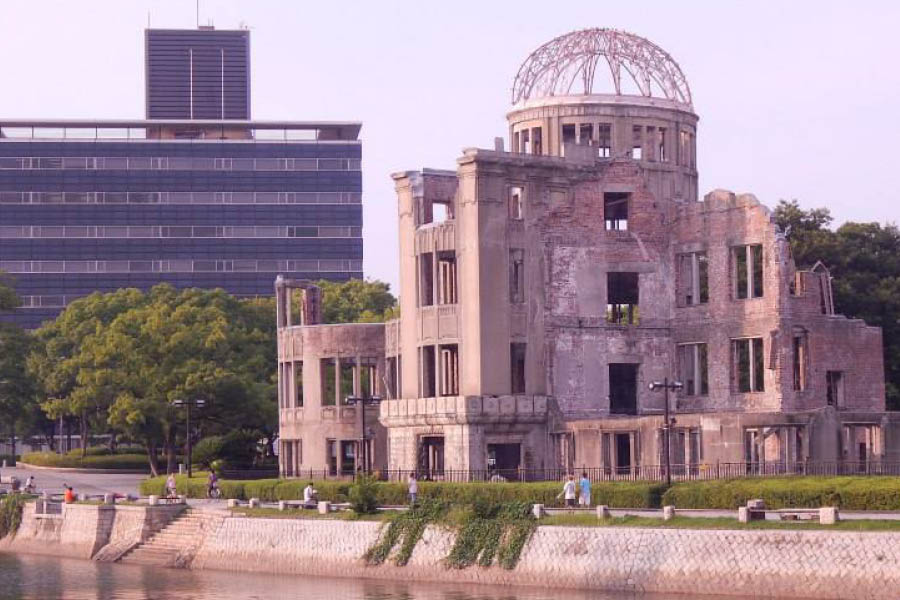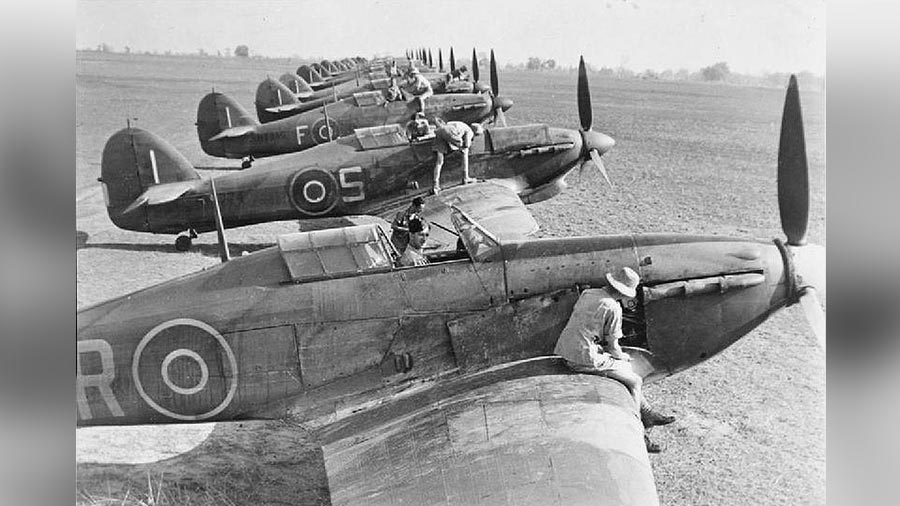It’s been 10 years since I went to Hiroshima but every August, I am reminded of the afternoon I spent at the Hiroshima Peace Memorial Museum.
Since nuclear weapons testing began on July 16, 1945, over 2,000 have taken place, according to the United Nations. The world’s first atomic bombing took place on August 6, 1945 in Hiroshima, and this museum in the capital of Hiroshima Prefecture in Japan is dedicated to documenting the atomic bombing of the city.
In December 2009, the United Nations General Assembly declared August 29 as the International Day against Nuclear Tests. The move intends to increase awareness and education “about the effects of nuclear weapon test explosions or any other nuclear explosions and the need for their cessation as one of the means of achieving the goal of a nuclear-weapon-free world”.
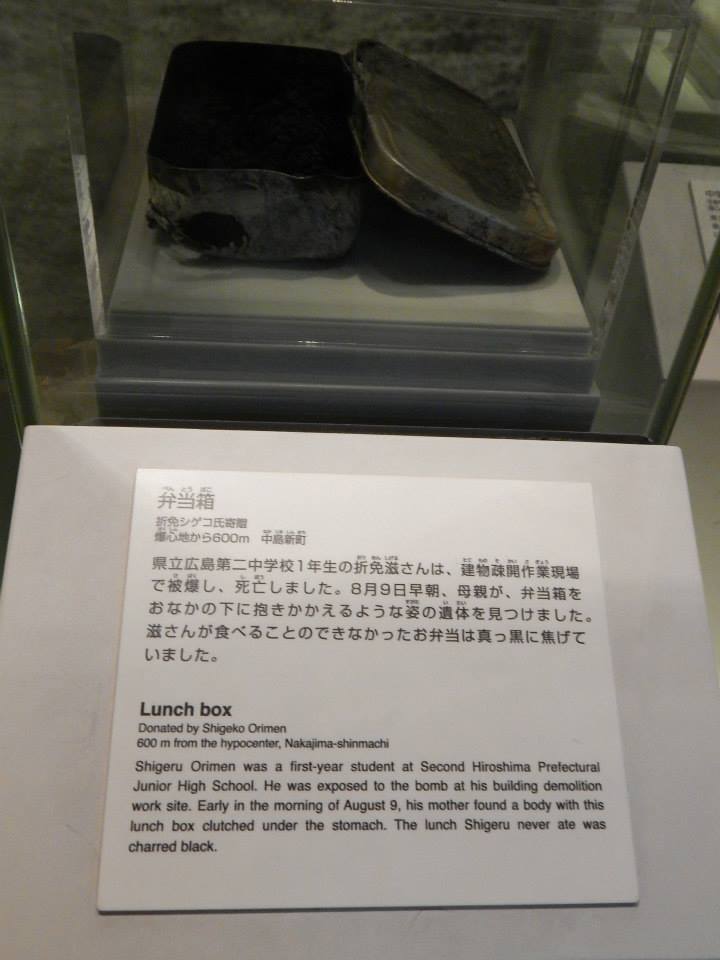
Shigeru Orimen's lunch box
Today, the only reminder of the bombing in Hiroshima is the Atomic Bomb Dome. Little Boy, which was the nickname of the bomb, detonated just above the dome of the building, which used to be a public hall.
Officially known as the Hiroshima Peace Memorial or Genbaku Dome, this is a Unesco World Heritage Site. Through the efforts of many people, including those of the city of Hiroshima, it has been preserved in the same state as immediately after the bombing. It is not only a grim symbol of the most destructive force ever created by humankind but it also expresses the hope for world peace and the ultimate elimination of all nuclear weapons.
At the museum, from which the Atomic Bomb Dome is clearly visible, you come across Shigeru Orimen’s lunchbox. Shigeru was a first-year student at Second Hiroshima Prefectural High School. Three days after the bombing, his mother found a charred body holding the lunchbox. You can still see the charred remains of the food Shigeru never ate.
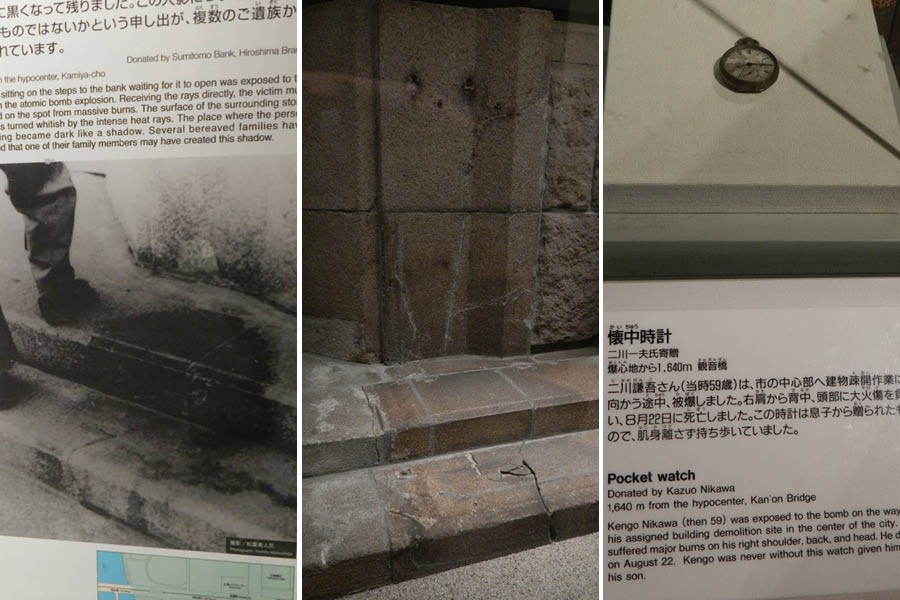
(From left) A picture and description of the stone slab; on display and a pocket watch which stopped at 8.15am, the precise time the nuclear bomb detonated
Someone was sitting on the steps of a bank and waiting for it to open when the bomb detonated. The person must have died instantly. On display is the stone slab at the bank’s entrance, which has a darker patch where the person was sitting.
Also on display are watches that stopped at 8.15am on the day, the time of the detonation, and various other personal belongings of victims.
Some other artefacts on display are starker — skin that fell off people’s bodies in the heat, photographs of people with the darker parts of their clothes imprinted on their skin because of the heat.

Dark patterns on a kimono imprinted on the body of a wearer in the intense heat generated by the bomb
There is a ‘before and after’ model of the city with respect to the bombing.
Because of its experiences in Hiroshima and Nagasaki, Japan, as a policy, does not possess, produce, or allow nuclear weapons into its territory.
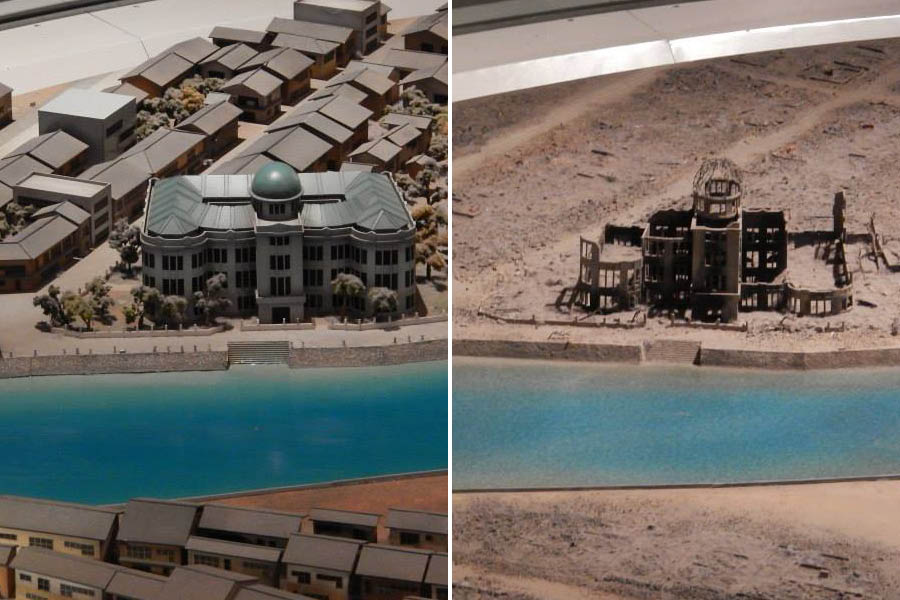
Parts of the ‘before’ and ‘after’ models of the Hiroshima city, which was ‘nuke-d’
Successive mayors of Hiroshima have sent letters of protest for every nuclear test by any country since 1968. Copies of those letters are also on display. Among the receivers of the letter are former US President Barack Obama and North Korean leader Kim Jong-Un.
The museum will disturb you. But if you are around Hiroshima, this is one place I recommend you visit.
Every single person on the planet should be aware of what human beings have done to their fellow human beings. The experience, hopefully, will inspire visitors to do whatever they can to ensure this bit of history never repeats itself.
